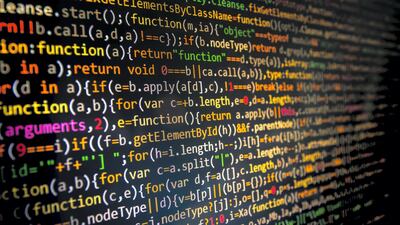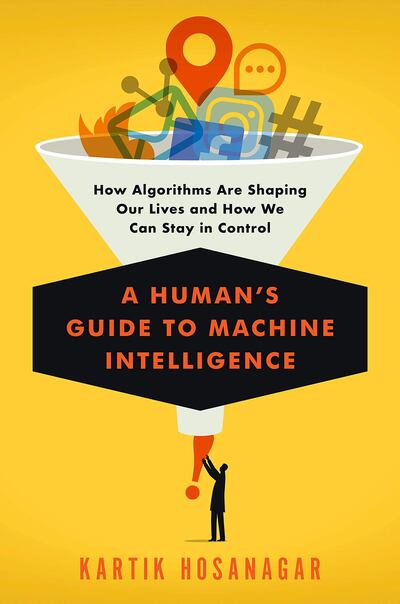Since algorithms are the subject of Kartik Hosanagar's new book, A Human's Guide to Machine Intelligence, and since they control increasingly large portions of our daily lives, it's best if we get our definitions clear at the outset: in basic terms, an algorithm is a set of instructions. We associate them now with machines, but as Hosanagar says early in his book, that need not be the case. "For example, I follow a set of steps when I make an omelette," he writes.
"You might call it an omelette recipe, but the former engineer in me views it as an omelette algorithm."
But when you take the simple concept of an algorithm – Step 1: Do X; Step 2: Do Y; Step 3: Combine X and Y – and you mix it with artificial intelligence, nothing is simple. AI mimics human cognition with deeply disturbing fidelity. "Smart" machines absorb information at rates far beyond what their original human programmers can match, and they learn and adapt much faster and often in very different ways than those programmers expect.
"Because machine learning algorithms can actually change their own structure, the more examples to which they are exposed, the more finely tuned they become," Hosanagar writes. "They perform a process of adaptation, tweaking their existing rules based on new evidence."
Those adaptations, that tweaking, is all around us now, all the time. They shape virtually every detail of our online experience. They're in our homes and in our phones. Algorithms guide legal sentencing, medical diagnoses, they direct planes during both flight and landing, as well as a growing number of cars on the road. Their blinding speed and the way they simulate human intuition make them the new masters of financial markets all over the world. As Hosanagar says, algorithms grow, adapt and learn.
"I am a believer in the immense potential of algorithmic decision-making," the author says.
Hosanagar is the John C Hower professor of technology and digital business at the Wharton School of the University of Pennsylvania, and this book reads like a detailed and courteous letter of introduction between one species and another. He takes his (human) readers through the history of algorithms, from their most basic beginnings to their present proliferation. He gives a clear and readable breakdown of the growth of machine intelligence.
Naturally, omnipresent tech giants such as Google and Facebook feature prominently in the story. Hosanagar is perfectly situated to be a shrewd guide through the often Byzantine considerations behind things such as Google's renowned search algorithms or the always changing user controls on Facebook.
Readers will most likely have had the eerie experience of typing the words "yoga mat" into a Facebook status update (or even a private email) only to be bombarded with sidebar advertisements for yoga products. We've grown uneasily accustomed to having our online minds read in such ways, doing our best to ignore how every word we type online is being monitored by algorithms that are seeking endlessly to combine X and Y. Hosanagar points out that we even do some of that work ourselves, and not always in ways that make us look good.
"It could be argued that Facebook's algorithm knows what we want better than we do ourselves," he writes. "Human psychology drives us to click on the very items we would like to think we're above," he adds.
The end result of such a situation is well known: a pervasive feeling of disenfranchisement, the sense of control slipping a little further away. And Hosanagar ends his book with a stab at a solution, an "Algorithmic Bill of Rights". Over the past few years, there have been tentative efforts by Google, Facebook, Amazon, IBM, Microsoft, Apple and eBay, among others, to create a series of policies and best practices for all the issues posed by AI. A Human's Guide to Machine Intelligence gets specific on these policies.
Those central tenets boil down to transparency and accountability. People who use an algorithm should have a right to know how they were shaped and "trained"; they should have a right to know how the algorithms that affect their lives are used. There should always be a "feedback loop" between algorithms and their users; a level of control the users can exercise over the AI involved.
It all makes basic, elementary sense. If implemented, this Algorithmic Bill of Rights would return a human face to a world that seems overwhelmingly driven by technology. The problem? Algorithms are set in motion by people who make piles of money from their unimpeded – and unexamined – growth. Will such people voluntarily curtail their creations? Time will tell if they think their own species is worth saving.


